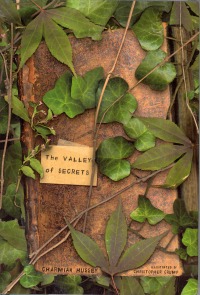| ________________
CM . . .
. Volume XI Number 21 . . . .June 24, 2005
excerpt:
Stephen Lansbury, an orphan, inherits his great uncle's estate, Lansbury Hall, in Cornwall. But when he arrives, no one seems to be there, although the gate and the door are unlocked. Stephen's suspicion that he is being watched is clarified when he meets an elderly South American Indian, Murra-Yari, a secret ward and friend of his great uncle, Theodore. Reading about Theodore's travels to the Amazon with B. (who turns out to be Bertie, Stephen's lawyer), from his great uncle's five ancient diaries thrills Stephen but not as much as discovering the different species of Amazonian Bugwomps nurtured on the estate by the two elderly friends. Determined to fulfill the conditions of Theodore's will, Stephen learns everything he can from Murra-Yari before a recurring bout of malaria kills the old man. Murra-Yari's gold necklace provides enough money for Stephen to manage the estate, and a young girl related to Bertie turns up at the gate to help him. There is a great deal of description, mostly of plants and the landscape, that, although it sets the rich scene vividly, may impede the plot too much for the intended age group. Stephen is an intense botanist—most children would find this very odd—and spends much of his time glorying in nature (having been stifled in the city for so long) and worrying about the environment, particularly the Amazon rain forest. The author is vitally interested in the plight of indigenous people, and she comes perilously close to lecturing when Theodore and Bertie are exploring and when Stephen is reading Theodore's diary. As Murra-Yari teaches Stephen to manage the estate, the reader also feels as if a crash course in survival techniques is being offered. What saves this novel from utter tedium is the spooky mood in the first part: what is watching Stephen? In the last half of the book, the adorable Bugwomps, their antics and their attachment to Murra-Yari and Stephen, will hold the reader's interest. The language is clearly British English. There are many terms, expressions and even specific words such as "whilst" that lend the novel a formal tone that Canadian children may see as pretentious. Good readers, however, will recognize it as style and will happily adjust. Much of the book consists of Stephen's reading Theodore's diaries, a plot device that allows for information from the past to be included, but one which slows down the action. This long, intricate British young adult novel will attract younger children who read very well or those fortunate enough to be read aloud to. Stephen grows from a tentative, childish, fearful boy into a strong, confident, compassionate young man, much like his great uncle Theodore. The fact that he doesn't have to work, that he has an inheritance he can live on, will not be lost on class-conscious British children. Note also that he does not go to school. His education comes from the land and the wisdom of Murra-Yari. Canadian children will be unfamiliar with the size of estates like Lansbury Hall and the money needed to run them. All will delight in Stephen's freedom and his friendship with Murra-Yari, who seems like a gentle, kind grandfather. Stephen's relationship with Tig, the Bugwomp, will attract all the animal lovers. Recommended. Joan Marshall is the teacher-librarian at Fort Richmond Collegiate in Winnipeg, MB.
To comment
on this title or this review, send mail to cm@umanitoba.ca.
Copyright © the Manitoba Library Association. Reproduction for personal
use is permitted only if this copyright notice is maintained. Any
other reproduction is prohibited without permission.
NEXT REVIEW |
TABLE OF CONTENTS FOR THIS ISSUE
- June 24, 2005.
AUTHORS |
TITLES |
MEDIA REVIEWS |
PROFILES |
BACK ISSUES |
SEARCH |
CMARCHIVE |
HOME |
